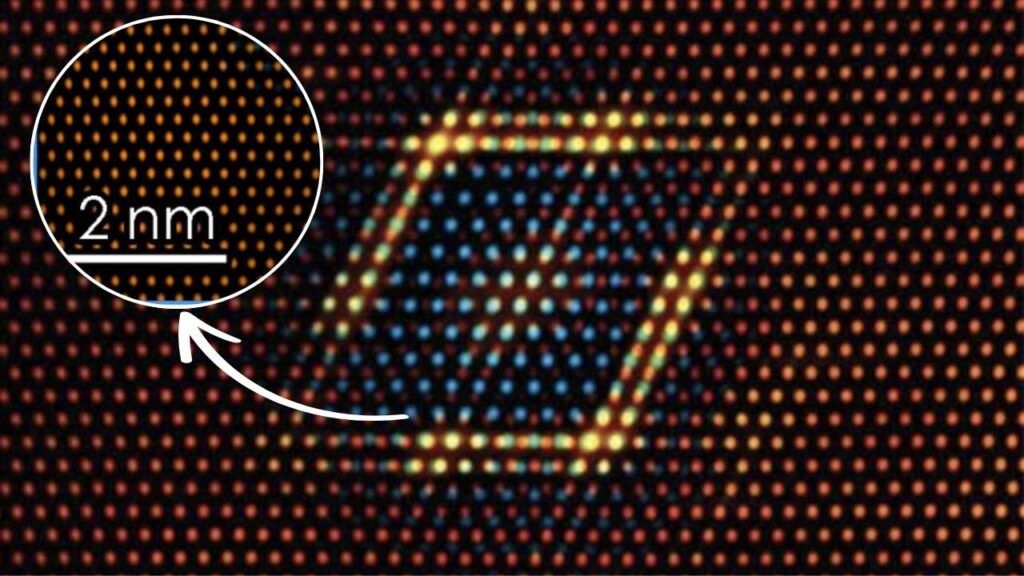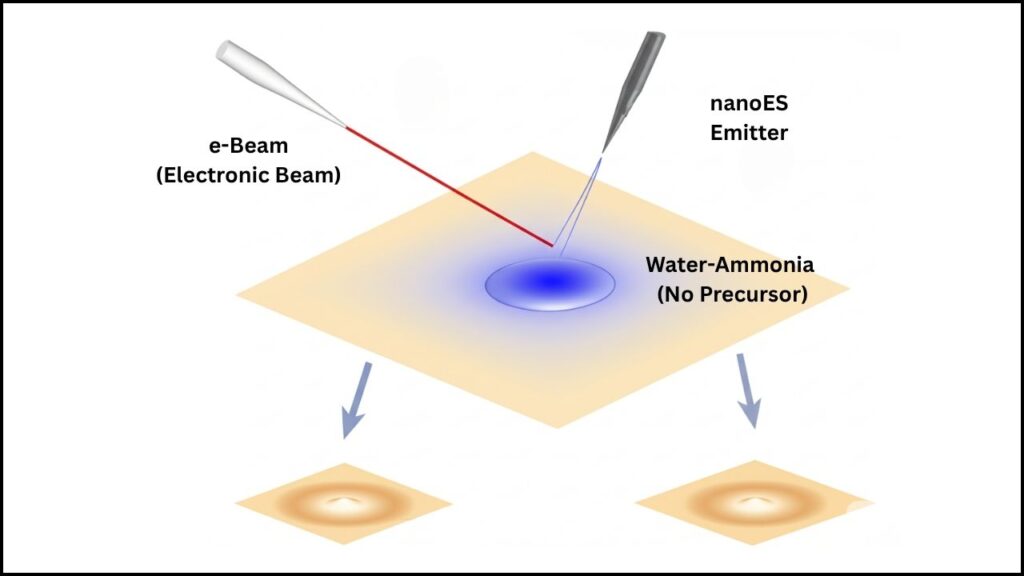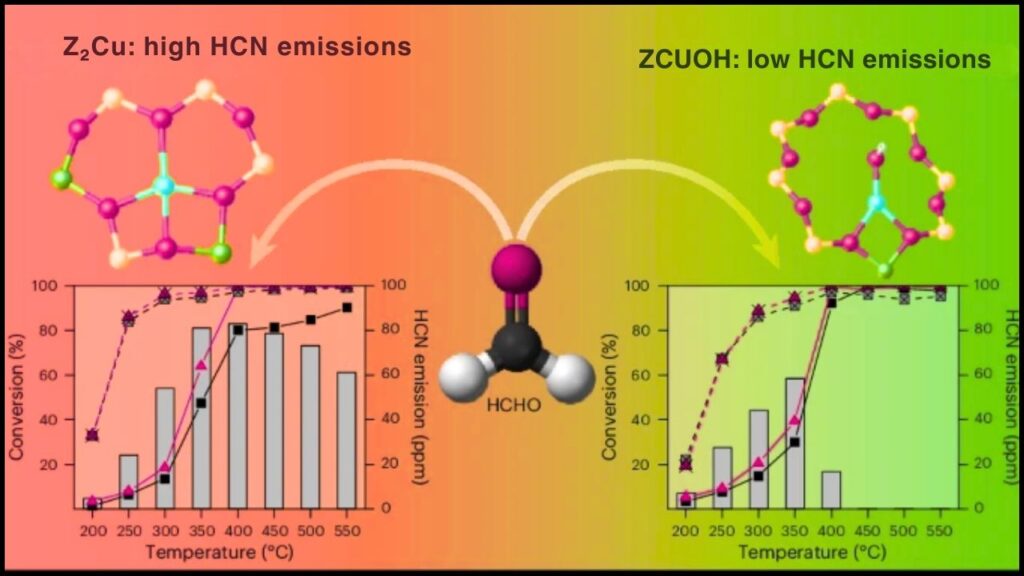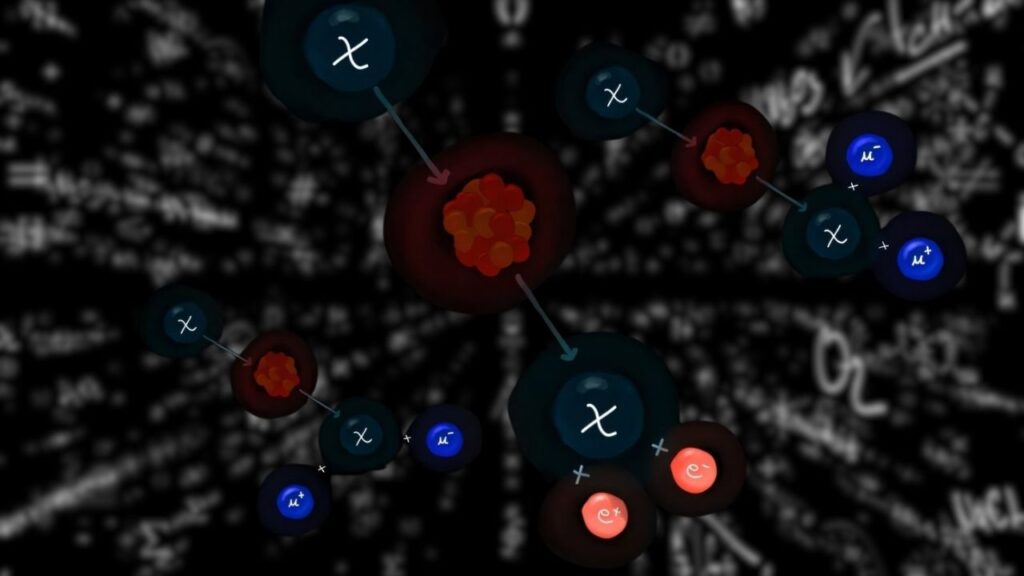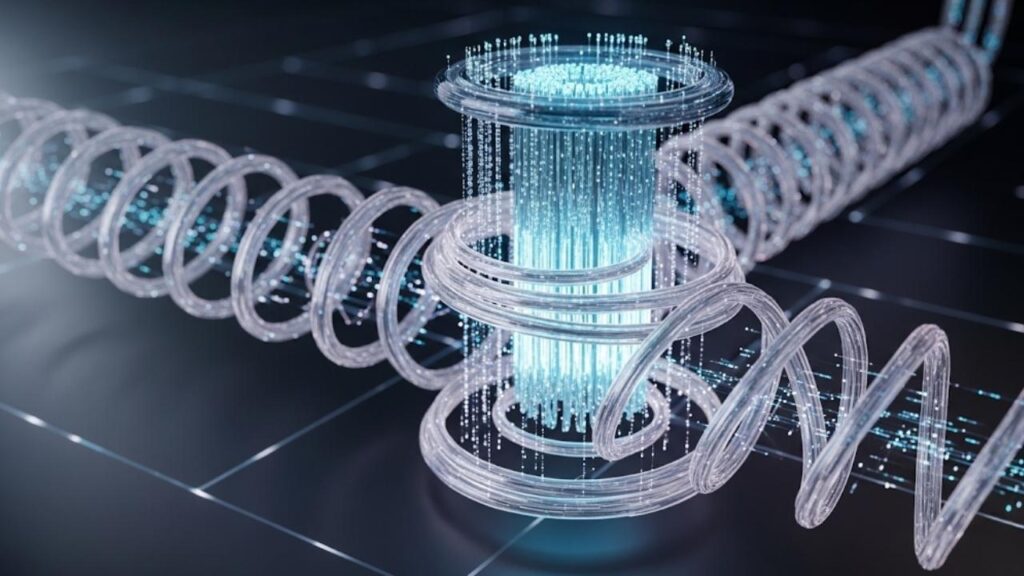Imagine a world where your gadgets never overheat, your phone battery lasts for days, and computers process data almost instantly, with a fraction of the energy used today. That’s the promise of spin currents—a new way to power, process, and store information in electronics, moving beyond the age-old reliance on electric currents to harness the very “spin” of electrons. In the last few years, major breakthroughs have changed the game: cheap, abundant materials can now generate these spin currents, making the dream of ultra-efficient, ultra-fast, and ultra-small devices much closer to reality.
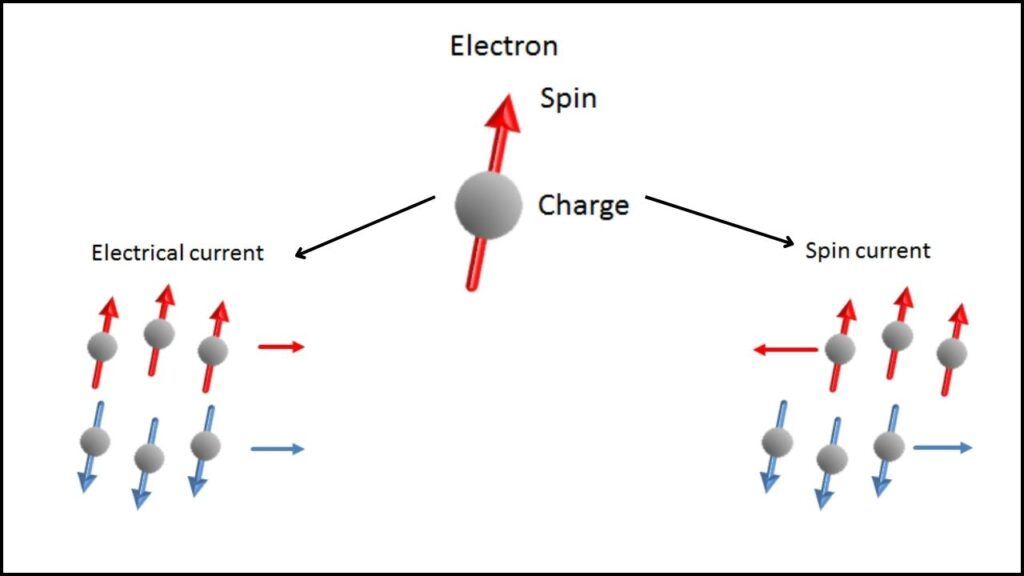
Table of Contents
What Are Spin Currents, and Why Do They Matter?
All electronics today rely on electric currents—the flow of electrons carrying their negative charge, like water flowing through a pipe. But electrons are more than just tiny bundles of charge; each one also spins, like a miniature top. This spin is a fundamental quantum property, and when we can make electrons move while preserving or organizing their spin, we create what’s called a spin current.
Spin currents can carry information just like electric currents, but with a crucial difference: they don’t generate as much heat, they can be more efficient, and they can even carry extra information because spin can be “up” or “down” (a simple analogy: each electron can be a tiny magnet pointing north or south). This is the core of spintronics—the field aiming to replace or complement traditional electronics by using spin instead of, or alongside, charge.
The Promise of Spintronics
Spintronics promises devices that are faster, cooler, smaller, and more energy efficient than anything possible with standard electronics. Because heat and power consumption are the biggest challenges in today’s computer chips, spin-based devices could help computers keep getting quicker and more compact, even as traditional electronics start to hit physical limits. Experts believe spintronics will be essential for quantum computing, advanced memory, artificial intelligence, and even medical sensors.
The Challenge: Generating and Controlling Spin Currents
Until very recently, generating and controlling spin currents required expensive, rare materials (like platinum) or strong external magnetic fields—both of which are impractical for mass-market electronics. But the latest research has shown that cheap metals and common materials—including specially treated graphene, nickel-tungsten (Ni₄W) alloys, and more—can generate strong and useful spin currents, and even switch magnetic states without bulky magnets.
This is a big deal because it brings the cost, size, and complexity of spin-based devices down to where consumer electronics, data centers, and even quantum processors can benefit.
Spin Currents
| Topic | Key Facts & Data | Career/Professional Impact |
|---|---|---|
| Spin Current Basics | Uses electron spin (not charge) for data and power; enables faster, cooler, smaller devices. | Engineers, physicists, and materials scientists needed for new device architectures and manufacturing. |
| Material Advances | Cheap alloys (e.g., Ni₄W, graphene) now generate spin currents; no need for expensive metals or large magnets. | Demand grows for experts in materials science, thin-film processing, and device integration. |
| Energy Efficiency | Spin-based devices can operate with much less energy than traditional chips, reducing global electricity use. | Sustainability and energy-efficiency roles become critical in engineering and manufacturing. |
| Device Applications | Spin currents power new memory (STT-MRAM), logic, sensors, and quantum computers; field-free switching is possible. | Tech companies and startups hiring for next-gen memory, AI, quantum hardware, and medical sensors. |
| Technology Readiness | Most spin current methods are lab-proven; mass production and integration with existing electronics are the next hurdles. | Investment in pilot lines, cleanrooms, and collaboration between academia and industry accelerates. |
Spin currents are transforming electronics by harnessing the spin of electrons—not just their charge—to create devices that are faster, smaller, cooler, and far more energy efficient. Recent breakthroughs with cheap, abundant materials like graphene and nickel-tungsten alloys have removed the last major barriers to mass adoption. Whether you’re a student, engineer, entrepreneur, or simply a tech enthusiast, understanding spin electronics is key to grasping the future of computing, memory, sensing, and beyond. The journey has just begun, and the possibilities are as exciting as they are endless.
(Note: Nature Communications is cited as the official source, reflecting the peer-reviewed publication status of several recent breakthroughs in graphene and spin current research.)
How Spin Currents Work—In Plain Language
Let’s break it down:
What Is Electron Spin?
Every electron acts like a tiny magnet, with its “north” and “south” poles determined by its spin direction (“up” or “down”). When lots of electrons in a material all spin the same way, they create a magnetic field. This is why materials like iron are naturally magnetic.
What Is a Spin Current?
A spin current is a flow of these spin states—not just the charge—through a material. If you can get electrons to move while keeping their spins aligned, you’ve created a spin current. This can transport information (like 0s and 1s in a computer) just like a charge current, but with less energy loss.
How Are Spin Currents Generated?
Traditionally, generating spin currents required external magnets to align electron spins, or special materials (like platinum) that interact strongly with electron spins, “flipping” them as electrons move. But recent breakthroughs have found ways to generate pure spin currents without magnets, and using common, inexpensive materials.
For example, researchers at TU Delft discovered that graphene—a single layer of carbon atoms—can conduct spin currents along its edges, with electrons all spinning the same way, without any magnetic field at all. This quantum spin Hall effect is a major leap because it means these spin currents can be integrated directly into computer chips, without big, clunky magnets or expensive metals.
Similarly, at the University of Minnesota, scientists found that nickel-tungsten (Ni₄W) alloys can generate strong spin currents and switch magnetic bits in memory devices—called field-free switching—using very little power. This is a huge advantage for energy-efficient memory and computing.
Why Are Spin Currents More Efficient?
Spin currents are insensitive to the motion of charge, so moving information via spin doesn’t produce as much heat as moving charge does. This means less wasted energy, cooler devices, and longer battery life. In fact, some spin-based memory chips already exist (like STT-MRAM), storing data even when the power is off—something impossible with most current memory.
Real-World Applications of Spin Currents
Spin currents aren’t just a theoretical curiosity—they’re already making their way into real devices, and the range of applications is rapidly expanding.
Memory Devices (STT-MRAM)
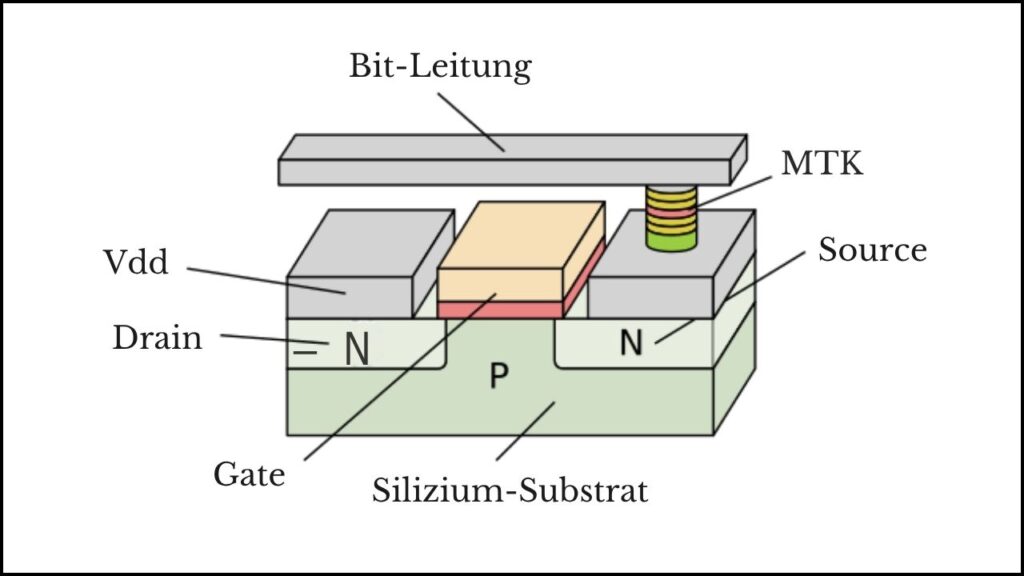
Spin-transfer torque magnetic random-access memory (STT-MRAM) uses spin currents to switch tiny magnetic bits, storing data even when the power is off. Unlike flash memory (used in USB drives and SSDs), STT-MRAM is almost infinitely rewriteable, doesn’t degrade over time, and uses less power. Major companies are investing billions to bring this technology to market for everything from smartphones to data centers.
Logic and Processing
Spin currents can also be used in logic devices, potentially replacing or enhancing the transistors in today’s computer chips. Because spins can encode more information and use less energy, spin-based logic could make processors much more efficient, especially for artificial intelligence and big data.
Sensors and Medical Devices
Spin currents are extremely sensitive to magnetic fields, so they can be used in ultra-sensitive sensors for detecting diseases, imaging the brain, or monitoring environmental conditions. These sensors could be smaller, cheaper, and more precise than current technologies.
Quantum Computing
Spintronics is also a key enabler for quantum computing. Quantum computers exploit the properties of spins to process information in ways that are impossible for classical computers. The ability to generate and control spin currents in common, scalable materials is a critical step toward building practical quantum devices.
The Science Behind the Breakthroughs
Understanding a few key concepts will help you appreciate why these advances matter so much:
Quantum Spin Hall Effect
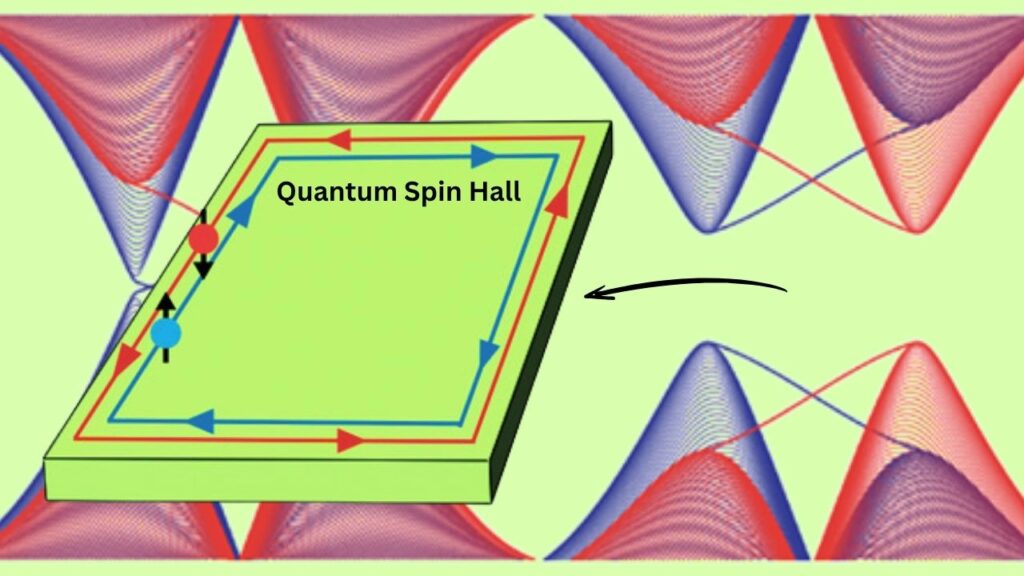
The quantum spin Hall effect is a quantum mechanical phenomenon where electrons in certain materials (like graphene or topological insulators) can move along the edges in “spin-polarized” channels without scattering—meaning their spins stay aligned, and they don’t lose energy to heat. This is like a one-way, resistance-free highway for spins. TU Delft’s recent work showed this can happen in graphene without any magnetic field, making it practical for on-chip integration.
Spin-Orbit Torque (SOT)
Spin-orbit torque is a way to generate spin currents using a combination of spin and the electron’s orbital motion around the nucleus.
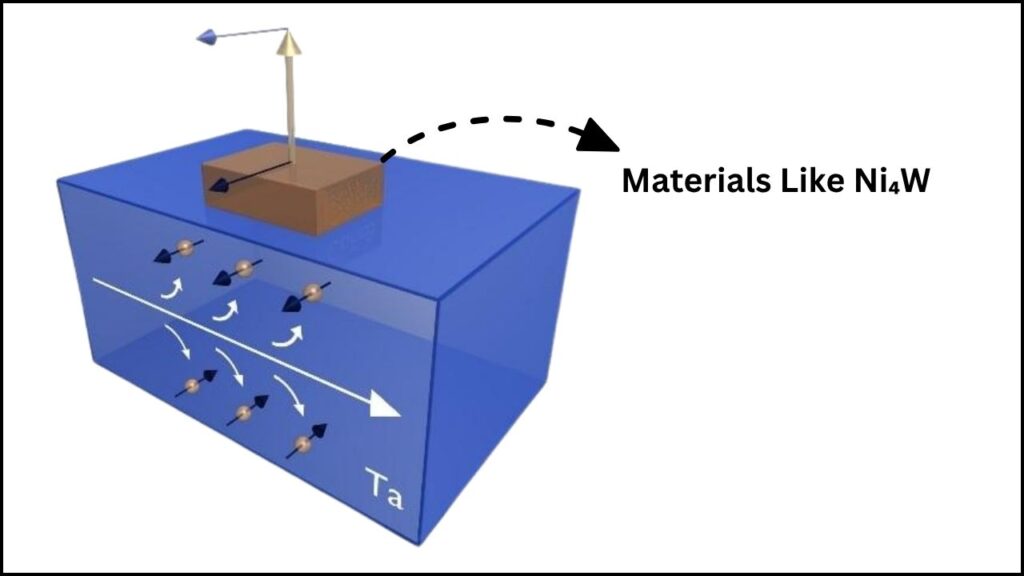
When you run an electric current through certain materials (like Ni₄W), the interaction between the electrons’ spins and their orbits generates a strong spin current that can switch magnetic bits in memory devices. This is how you get field-free switching—no magnet required, just a material with the right properties.
Spin Pumping
Researchers in South Korea discovered a new way to generate strong spin currents at room temperature using a process called longitudinal spin pumping. This was previously thought to work only at extremely low temperatures, but by tuning the material and the measurement technique, they achieved currents ten times stronger than before. This could lead to even more efficient memory and logic devices in the near future.
Cheap Materials: The Game-Changer for Spin Electronics
For decades, spintronics research was held back by the need for rare, expensive materials or bulky magnets. But now, three major developments have changed the landscape:
Graphene: The Wonder Material
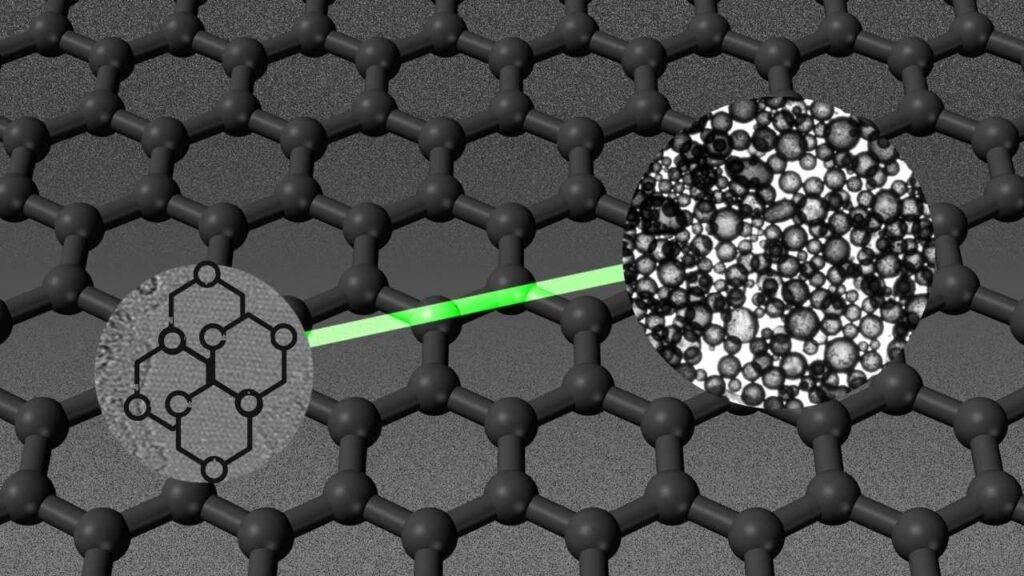
Graphene—a single layer of carbon atoms arranged in a honeycomb—can support spin currents along its edges, thanks to the quantum spin Hall effect. Because graphene is cheap, abundant, and easy to work with, this opens the door to mass-produced, spin-based circuits embedded directly into computer chips.
Nickel-Tungsten Alloys (Ni₄W)
Ni₄W is a simple alloy of nickel and tungsten, both of which are common and inexpensive. Researchers found that this material can generate strong spin currents and switch magnetic states in multiple directions without any external magnetic field. This means low-cost, energy-efficient memory and logic devices could soon be a reality.
Room-Temperature Operation
Some of the most exciting recent work has shown that spin effects can be strong even at room temperature, not just in ultra-cold labs. This is critical for real-world devices, which must work in everyday environments.
What This Means for Engineers, Inventors, and Entrepreneurs
The rise of spin electronics creates new opportunities—and new skills to master.
New Careers in Materials Science
Materials scientists will be in high demand to find, optimize, and manufacture the next generation of spin-active materials. This means understanding not just the basics of metals and semiconductors, but also the quantum properties that make spin currents possible.
Device Engineers and Chip Designers
Device engineers need to learn how to design circuits that exploit spin, not just charge. This includes new architectures for memory, logic, sensors, and even quantum processors.
Sustainability Experts
As the world focuses on energy efficiency, professionals who understand spin-based devices and how to integrate them into data centers, smartphones, and IoT gadgets will be highly valued.
Startups and Innovation
The shift to spin electronics is still young, and there’s a huge opportunity for startups to develop new types of memory, sensors, and processors. Investors are already backing companies working on spintronics for AI, quantum, and green technology.
Manufacturing and Scaling
The path from lab breakthrough to mass market requires advances in manufacturing: how to make billions of spin-based devices reliably and affordably. This is where industrial engineers and process specialists come in.
Spin Currents in Everyday Life: When Will We See the Impact?
You might wonder, when will spin-based devices be in my phone, laptop, or smart home? The answer: some are already here, and many more are coming.
Already Here: Spin Sensors and Memory
Hard drive read heads have used the giant magnetoresistance effect—a spin phenomenon—for over 20 years. STT-MRAM (spin-transfer torque memory) is already in some industrial and specialty applications, and is starting to appear in consumer gadgets.
Coming Soon: Spin-Based Logic and Processors
It will take a few more years for spin-based processors to be mainstream, but the pace is quickening. Companies are investing heavily in next-generation memory and sensors, and the first spin-based logic chips are likely to debut in AI and data center applications.
Long-Term: Quantum and Biomedical Applications
In the longer term, spin currents could enable quantum computers and medical imaging devices that are currently impossible. As materials and manufacturing improve, we’ll see spin electronics in more and more places you interact with every day.
Common Myths and Misconceptions
Let’s clear up a few misunderstandings that often come up with spin electronics.
Myth: Spin currents are just theoretical.
Reality: Devices using spin currents are already in your computer, and new spin-based memory devices are starting to ship.
Myth: Spin electronics will replace all chips overnight.
Reality: Spin-based devices will first complement, then gradually replace, some traditional electronics—especially in memory and sensors.
Myth: Only quantum physicists can understand or work with spin currents.
Reality: Engineers, materials scientists, and even software developers are essential to bring spintronics to market.
Scientists Capture Invisible Quantum Waves in Nanomaterials — A Breakthrough You Need to See
High-Tc Superconductivity in La₃Ni₂O₇: Why This Discovery Is a Milestone in Materials Science
Aluminum Ion-Based Clock Breaks Record With 19-Decimal Precision
FAQs About Spin Currents
Q: What is the main difference between spin currents and electric currents?
A: Electric currents move electric charge, while spin currents move the spin state of electrons. Spin currents can carry information or power devices with much less heat and energy loss.
Q: Are spin-based devices available now?
A: Yes. Spin-based sensors are widely used, and new memory chips (like STT-MRAM) are starting to appear in consumer electronics.
Q: How do spin currents lead to lower energy use?
A: Because moving spins produces much less heat than moving charges, devices using spin currents can be much more energy efficient.
Q: What materials can be used for spin currents?
A: Originally, rare metals like platinum were needed. Now, inexpensive materials like graphene and nickel-tungsten alloys can do the job.
Q: Is spin electronics only about computers?
A: No. Spin-based sensors, memory, logic, and even biomedical devices are all possible—and being developed right now.
Q: When will spin-based devices be everywhere?
A: Some are already here, and wider adoption depends on solving manufacturing challenges. Experts expect major progress in the next 5–10 years.
How to Get Involved: For Students, Professionals, and Enthusiasts
Whether you’re a student, a working engineer, or just curious about the future of technology, there are ways to get involved with spin electronics.
For Students
- Learn the basics of quantum mechanics, solid-state physics, and materials science.
- Participate in science fairs or research projects focused on nanotechnology and spintronics.
- Follow the latest research from top universities and tech companies working on spin currents.
For Professionals
- Explore new roles in materials science, device engineering, and manufacturing.
- Consider advanced degrees or certifications in nanotechnology, semiconductor physics, or quantum engineering.
- Join industry forums or professional societies focused on emerging memory, sensors, and quantum technologies.
For Entrepreneurs and Inventors
- Look for opportunities to commercialize spin-based memory, sensors, or logic devices.
- Connect with academic labs and startups working on spin electronics.
- Pitch investors on the energy-efficiency and market potential of next-generation spintronic devices.
The Future of Spin Currents and Spintronics
The field of spin electronics is evolving rapidly, with new materials, device concepts, and manufacturing techniques emerging every year. The ability to generate and control spin currents using cheap, abundant materials is removing the last major barriers to widespread adoption.
In the next decade, we can expect:
- Faster, smaller, and more energy-efficient computers for both consumers and data centers.
- Instant-on, non-volatile memory that never loses data and uses much less power.
- Ultra-sensitive sensors for health, environment, and industry.
- Quantum computers and other advanced devices that were previously impossible.
The combination of scientific breakthrough, material innovation, and manufacturing progress means that spin electronics is no longer a niche research topic—it’s the future of technology. And with every passing year, that future gets closer to your pocket, your home, and your workplace.
